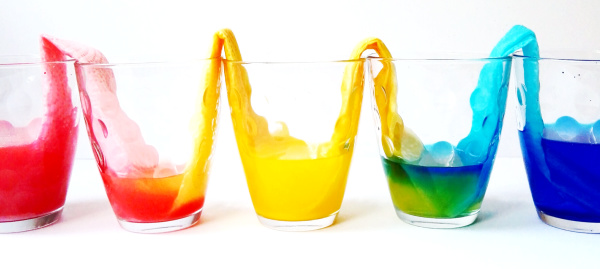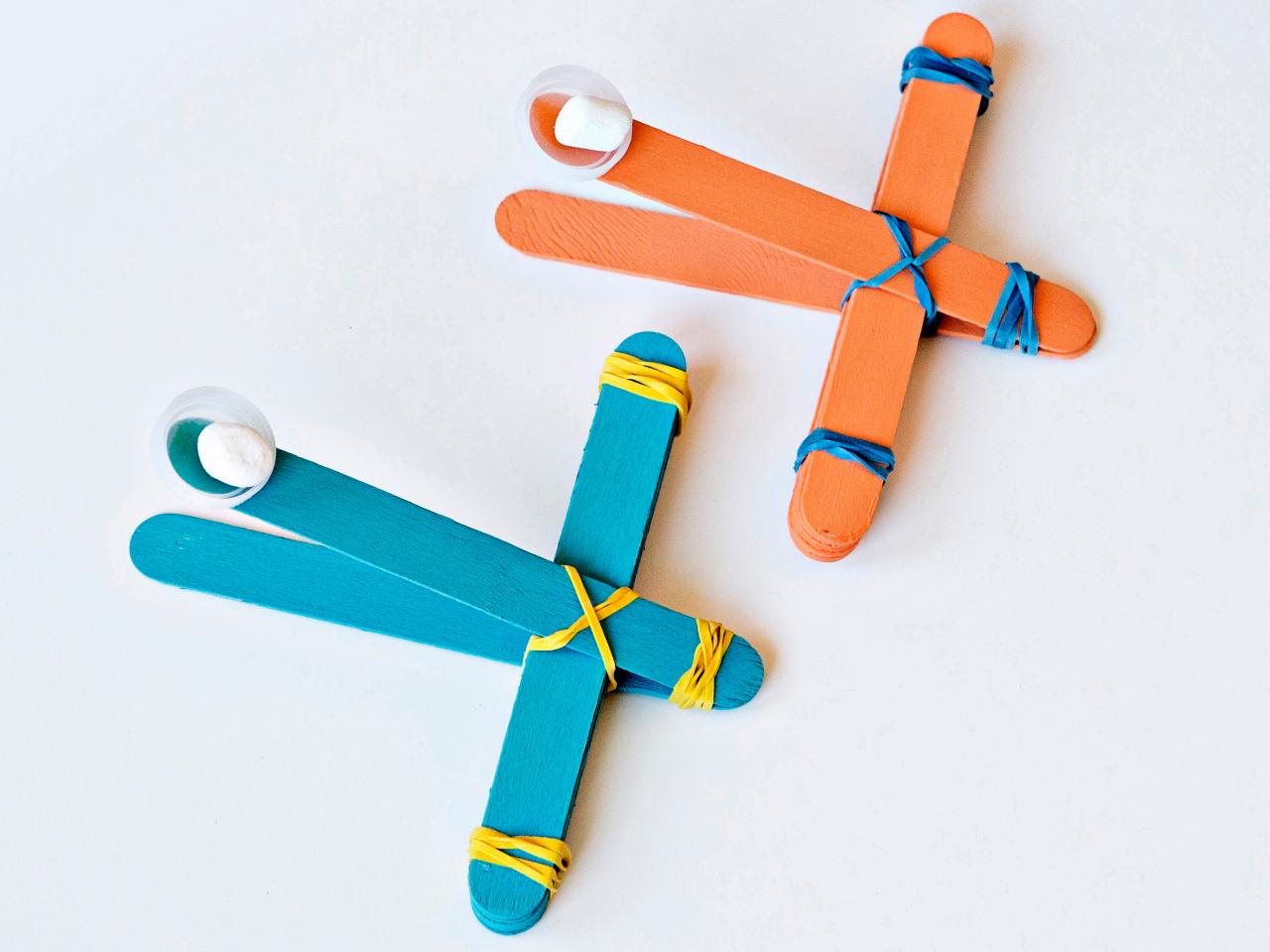We’ve all spent a little more time indoors these past few months. As a mom and fellow parent of constantly curious littles, I know my family has been seeking resources to keep us engaged in active learning and play. Have you been hearing all about STEAM and getting kids enthused about Science and Math education alongside the Arts? Us too! It seems like the perfect opportunity to put together this list of easy science experiments that boost entertainment and intelligence all at the same time! Ranging from encouragement to play with your food to engineering-focused builds, you’re sure to find some innovative inspiration on this experiment list!
If your child loves experimenting and learning with food while cooking, you might also want to check out our choices for top kids cooking kits.
1) Ice Cream in a Bag
A summer time treat kiddos won’t soon forget! When they ask for ice cream to beat the heat, tell them to grab the ingredients and get to shakin’. This remarkably simple and rewarding kitchen science experiment will educate kids about how energy alters states of matter and keep learning cool all summer long!
2) Grow an Avocado Plant
Get littles excited about the natural world by bringing it to life right in front of their eyes. The little sprout will stretch up toward the sun and the roots will reach down. All you need to start this science activity is the seed, sunshine, water and of course, patience!
Tutorial: How to Grow an Avocado Tree

3) Make Rock Candy
An edible innovation your little scientist will marvel over! Make old-fashioned rock candy right in your own kitchen. Curious kids will love choosing the color for their candy and observing the crystallization process in this yummy, customizable, experiment!
Tutorial: Rock Candy Science Project

4) The Pepper and Soap Experiment
Wish your kids could understand why you harp about washing hands? Get front row seats to see “germs” scattered by soap in this simple science experiment where ordinary ground black pepper acts as the culprit while soap chases it away to save the day!
5) Glitter Bug
It can be tricky for kids to bend their minds around the abstract concept of germs. Sometimes the explanation that you can’t see them but they can make you really sick just doesn’t cut it. Brace yourself for this one Mama, because yes, it includes the element of willingly and intentionally getting glitter all over every conceivable thing. We all know what a nightmare that can be, but once should be more than enough with this experiment to ensure that your kiddo will never again question how germs spread!
6) Shiny Penny
Convince kiddos to eat their veggies by showing them the superpowers of tomatoes in this experiment where ketchup leaves coins squeaky clean. What they’re really seeing is the power of acids to dissolve solids. This one doubles up as a personal hygiene persuasion as well. It’s a good reminder for kiddos who love ketchup to brush their teeth after eating to keep enamel intact!
7) Lemon Fizz
At the lemonade stand as well as in the laboratory, when life gives you lemons, you’ve got fun for the whole family! Lemons, baking soda, food coloring, and dish soap. These 4 common kitchen ingredients are what you need for a lotta fun and leftover, naturally, lemon-scented suds that you can still use to do the dishes!
Tutorial: Lemon Juice and Baking Soda Reaction Project

8) Make Your Own Water Colors
Messy maybe, but definitely worth the clean up. Inspire your little science-driven artist by letting them create their own paint set. Customize a color palette, sprinkle in glitter for some sparkle, or dive deeper into color by creating different shades in a single hue!
9) Walking Rainbow
Your scientist tot will feel like they’ve found the proverbial pot of gold when they see color “walking” along creating a rainbow as it goes right in front of their eyes. This enchanting experiment will teach kids about color theory, capillary action, the scientific method, and engineering!
Tutorial: Easy and Fun Walking Rainbow Science Experiment

10) Magic Milk
Make amazing color swirl art with just food coloring and milk while educating kids about the concept of surface tension. The drops of food coloring will remain intact on the surface of the milk until the tension is interrupted by dish soap on a cotton swab or toothpick. Just like magic, the swirls of color will begin to move and change as your little looks on!
Tutorial: Magic Milk Experiment for Kids

11) Chromatography Flowers
Create delicate blossoms while learning about chromatography, or the process for separating a mixture. In this case, water dissolves marker ink and leaves behind beautiful patterns on coffee filters or paper towels as it is absorbed. Little science-minded artists can collect these blooms into a bouquet of brain-powered beauty!
Tutorial: Beautiful Chromatography Flowers Science Project

12) String Phone
Kids will get good vibrations from studying the science of sound as they learn how to construct and use a simple string telephone. They’ll be able to observe the way the string acts as a conduit for the vibrations their voices create and the cups serve as speakers that amplify those vibrations. It’s also a great anatomy lesson opportunity because kids can feel their own vocal cords vibrating at their fingertips when they touch their throats while talking!
13) Lava Lamp
Get groovy with this homemade lava lamp that teaches kids about viscosity, density, and even cause and effect. This fun science experiment features cool, bubbly colors rising up from the mystical, magical chemical reaction between baking soda and vinegar!
Tutorial: How to Make a Lava Lamp

14) Pencil Proof Plastic Bag
Why doesn’t it leak? Your scientist will question their very own eyes when they see that they can pierce a plastic bag with a sharpened pencil without spilling a drop of the water contained inside. The science here is that the polymer chains that make up the plastic bag expand when the pencil perforates the plastic and shrink back together forming a new seal around the pencil. Quite a precise perforation!
Tutorial: Why Doesn’t the Water Leak

15) Self-inflating Balloon
Harness the power of chemical reaction and blow up a balloon without a single breath. Now that’s working smarter, not harder! At-home science experiment superstars, vinegar, and baking soda are the heroes here as well. Put some vinegar in a bottle and a bit of baking soda inside a balloon. When you attach the balloon and the baking soda combines with the vinegar, the reaction will inflate the balloon!
16) Balloon Powered Car
Off to the races with this create-a-car project that highlights the engineering side of STEM. No fossil fuels are required to run this racer! Use your creativity and craftiness to assemble the car from household odds and ends before you send it speeding off by simply inflating the balloon with your own breath. Hands-on creation and the opportunity to study velocity all in one compact little package!
17) Tornado in a Bottle
Unleash nature’s fury from the comfort of your own lab (or living room!) Amaze your little scientist with their ability to command the weather, all while enabling them to see and understand the concept of a vortex. A simple 1-liter bottle and water will do the trick or you can secure two bottles together for double the stormy shenanigans!
18) Instant Ice
Make indoor ice stalagmites instantly with this time-it-to-the-right-temp experiment. Is it ice magic? Even Elsa would be impressed as you’ll seemingly pour an ice tower right out of a bottle. The timing is key and you’ll have a short window in which to cast your ice spell, but your aspiring scientist won’t want to freeze out this learning opportunity. Add food coloring, like in the photo below, to up your ice-magic game to magnificent!
Tutorial: Instant Ice: Winter Science Experiment for Kids

19) Shaving Cream Water Cycle
Turn a rainy day into indoor weather play with this experiment that shows kids how water builds up in clouds to create rainfall. Mini meteorologists can make predictions and then count the exact number of drops needed to start a rainstorm. A glass of water, shaving cream, and blue food coloring equal observable rainfall as the shaving cream cloud saturates with drops of blue-colored water and it begins to “rain” inside the glass!
Tutorial: Shaving Cream Rain Cloud STEM Experiment and Printable

20) Marshmallow Catapult
Break out the rubber bands and your imagination for some marshmallow flinging fulcrum fun. Chopsticks, popsicle sticks, bamboo skewers, what do you have on hand? The options are endless and the exploration is part of the excitement. Use different materials to design a couple of catapults and test them out against one another to create a casual competition where everyone wins new knowledge of the foundations of physics!
Tutorial: Marshmallow Catapults!

Innovation and imagination abound with plenty of play and new ways to learn every single day! This list won’t let you down if you’re looking to STEAM up your summer with sensational science experiments that foster artistic creativity in your littles. Enjoy the exploration and leave us a comment to tell us all about your discoveries with these easy science experiments!



